New SRAM Red AXS groupset has been launched - here's why I think Dura-Ace Di2 is still king
After 800km on the new SRAM groupset, I'm still not quite a convert - here's why
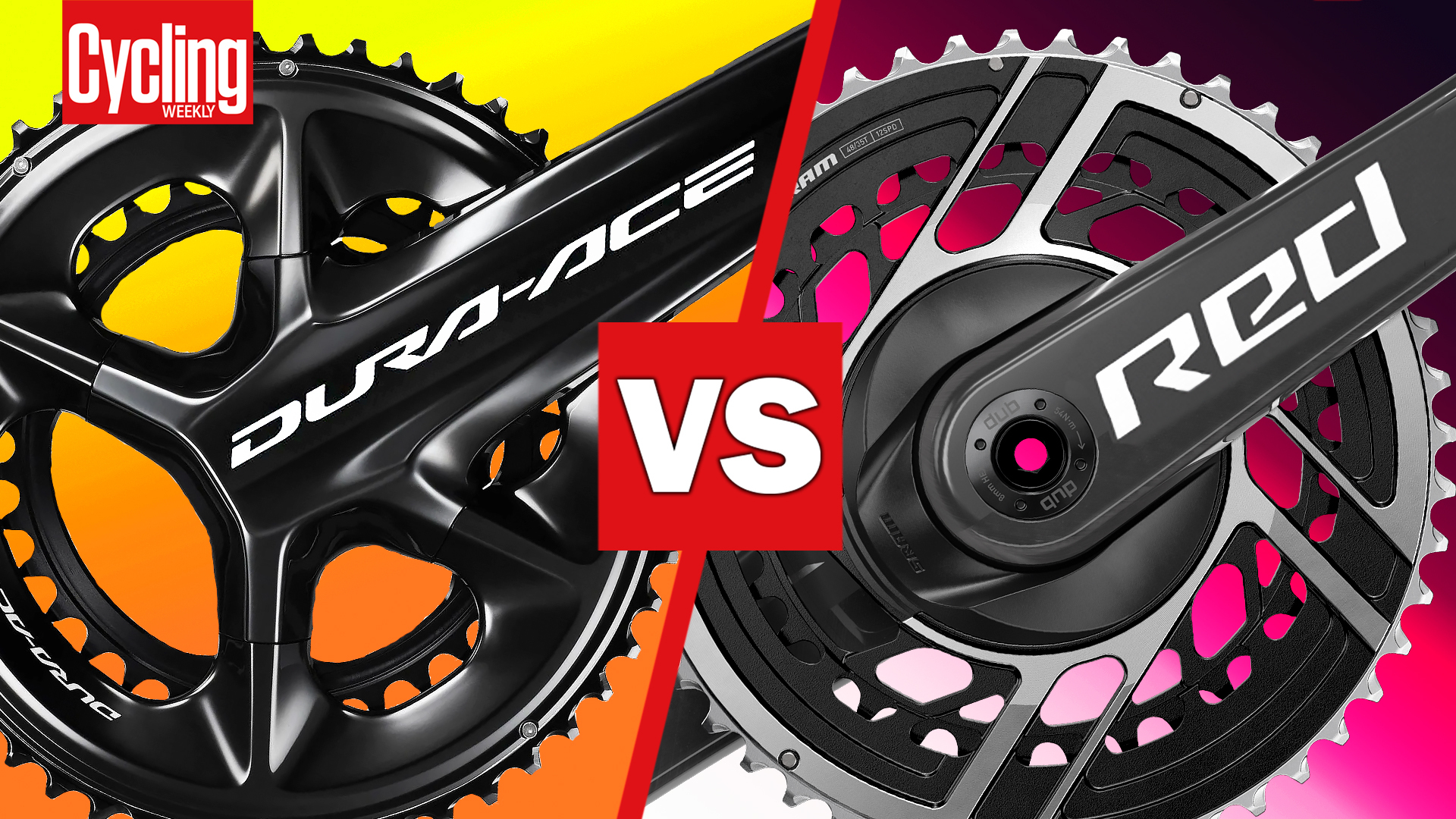
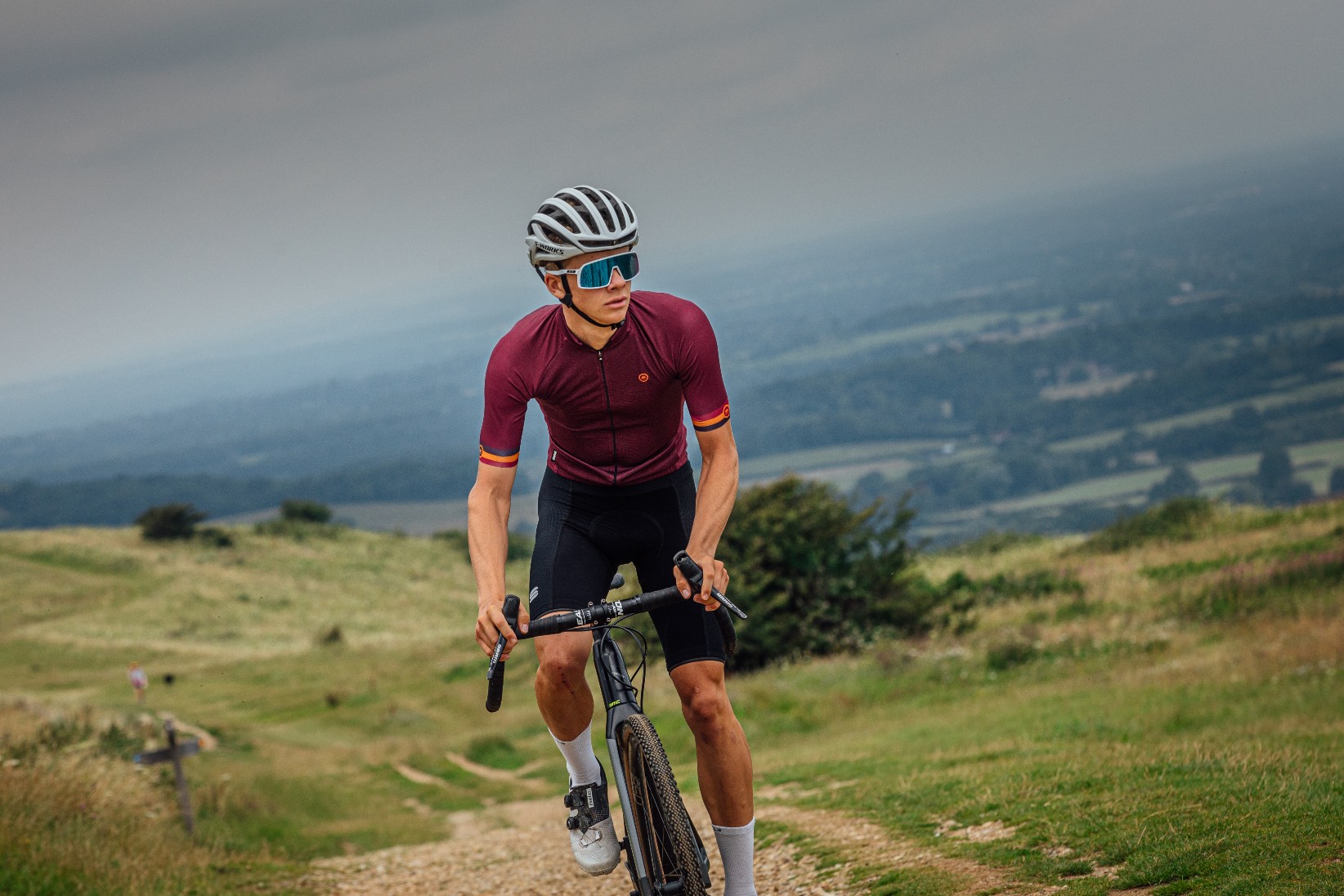
After months of anticipation, the next generation of SRAM Red AXS has made its debut, bringing with it a fresh aesthetic and enhanced performance across the board, promising improved braking and front derailleur shifting capabilities.
Having had the opportunity to test ride the new SRAM Red AXS ahead of its official launch, I think now is the perfect time for a detailed comparison between SRAM and its longstanding competitor, Shimano.
Note that this is my opinion of riding both groupsets, rather than an in-depth dive into their technical specifications. For all the nitty-gritty details, check out our full launch story and review.
Weight
The latest iteration of SRAM Red AXS proudly claims the title of the lightest road disc brake groupset ever produced by the company, shedding an impressive 154 grams compared to its predecessor. This weight reduction is primarily attributed to a comprehensive redesign of the brake and shifter components, resulting in a notable 90-gram decrease in system weight. Additionally, advancements such as a carbon fiber lower cage and revamped jockey wheels contribute to further weight savings across the groupset.
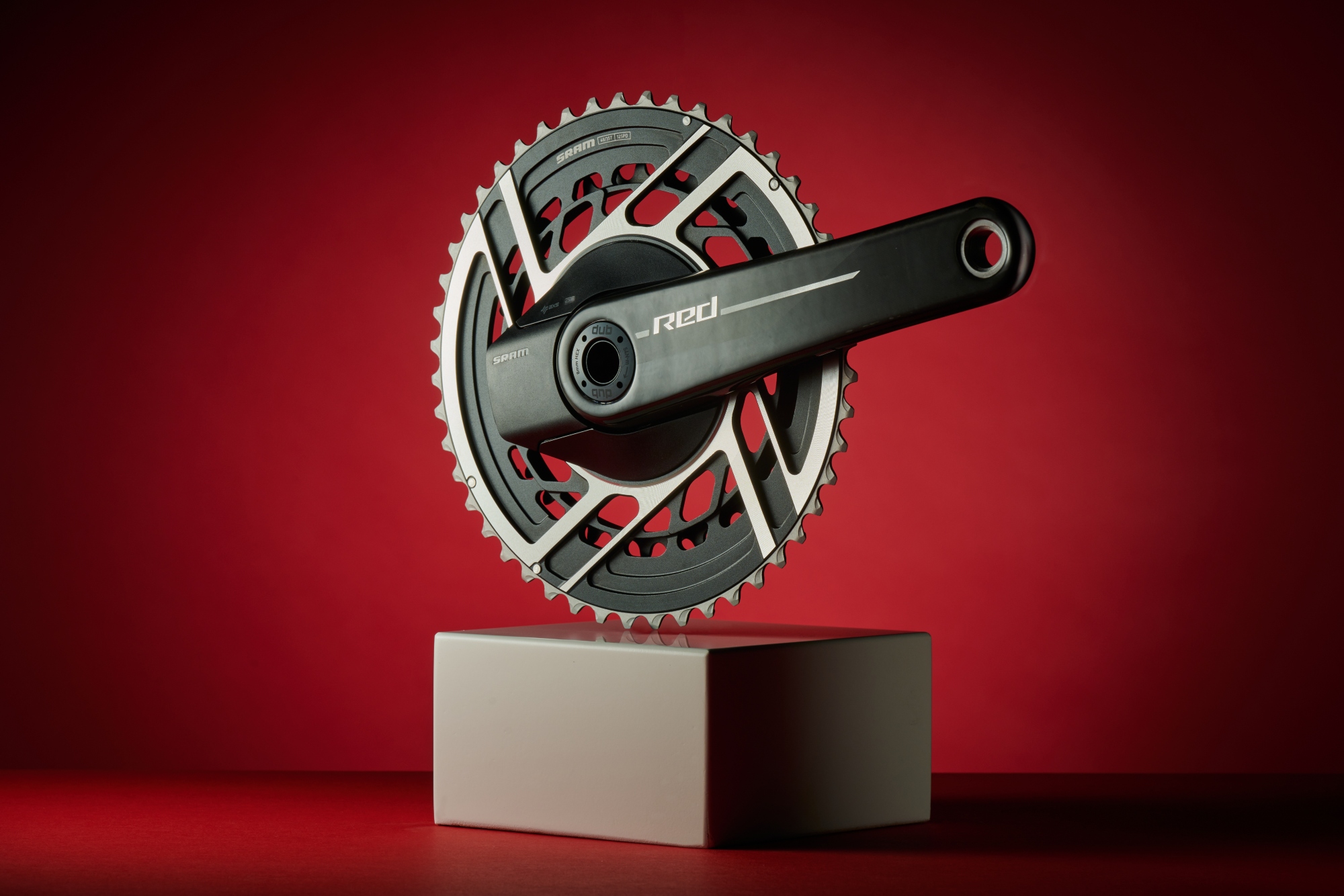
The new SRAM Red AXS chainset has been re-engineered - but is it as good as Shimano's Dura-Ace Di2?
Historically, Shimano's Dura-Ace Di2 held the title for the lightest disc brake road bike groupset on its release in 2021. However, SRAM Red AXS now surpasses it by nearly 100 grams.
Shifting performance
The efficacy of gear shifting stands as a pivotal aspect of any groupset, and SRAM has made strides in addressing past criticisms with the redesign of its front derailleur. Certainly, I can say that improvements have been made to minimize shift distances and enhance speed and reliability, though some users may find the difference in shift feel to be marginal compared to previous models. In contrast, Shimano's Dura-Ace Di2 has always had impeccable shifting performance, characterized by seamless transitions both up and down the cassette, even under load.
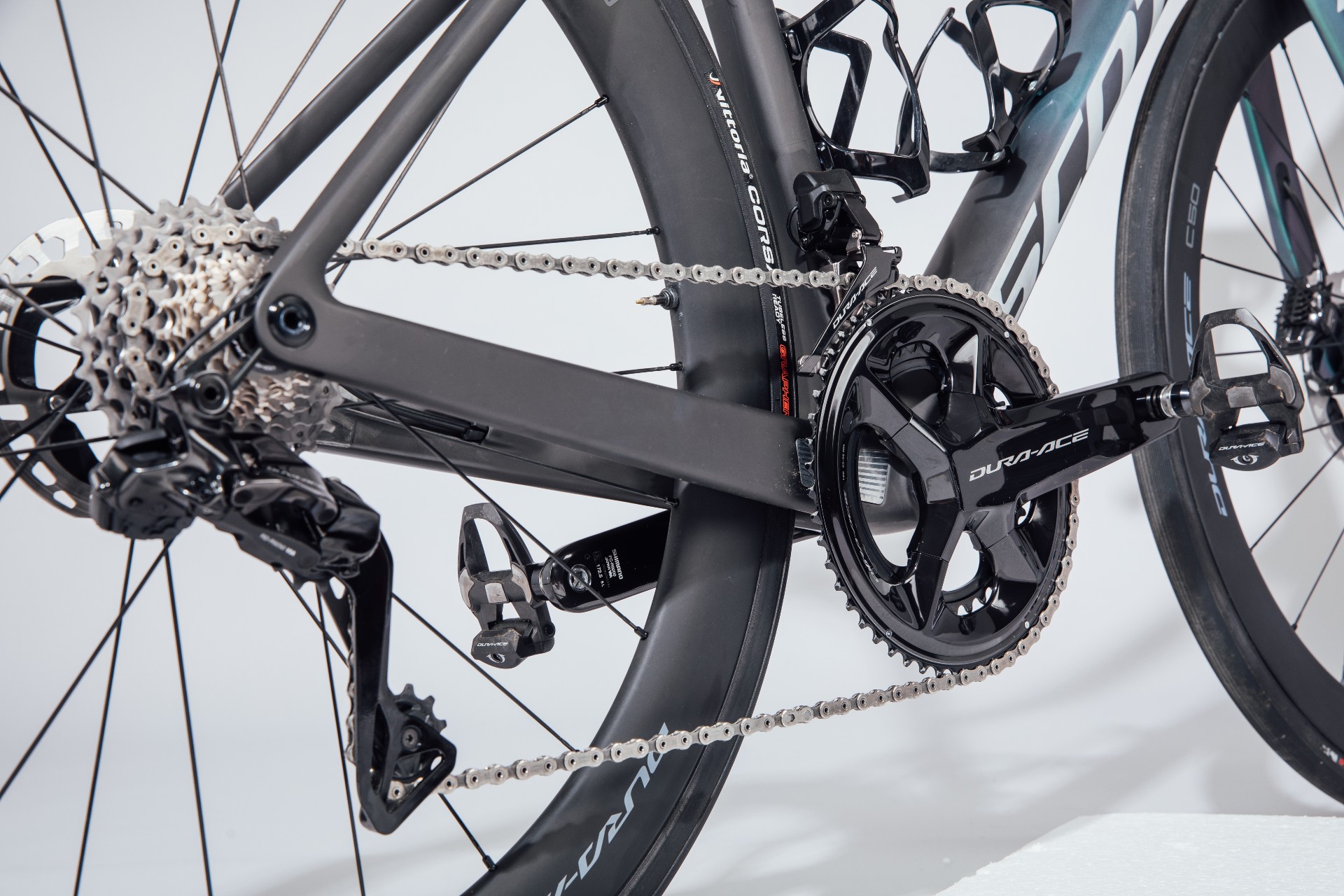
Shimano Dura-Ace now comes with new chainring sizes
Despite SRAM's efforts to refine its shifting mechanism, I think Shimano maintains its edge in this regard, thanks to its advanced Hyperglide technology and consistently reliable performance.
Both groupsets offer impressive shifting quality, but for the racer that requires the fastest possible responsive times, I can't recommend anything but Shimano - one all!
Braking performance
Recognizing the need for enhanced braking performance, SRAM has made significant efforts to elevate the braking quality of its new Red groupset. The redesign of the brake levers, which now integrate the master cylinder into the shifter body, results in a much lighter brake feel, and drastically improved modulation. Additionally, repositioned pistons at the calipers contribute to enhanced braking performance, marking a significant improvement over previous iterations.
While Shimano's braking systems have long been synonymous with reliability, SRAM's latest advancements have positioned it as a formidable contender.
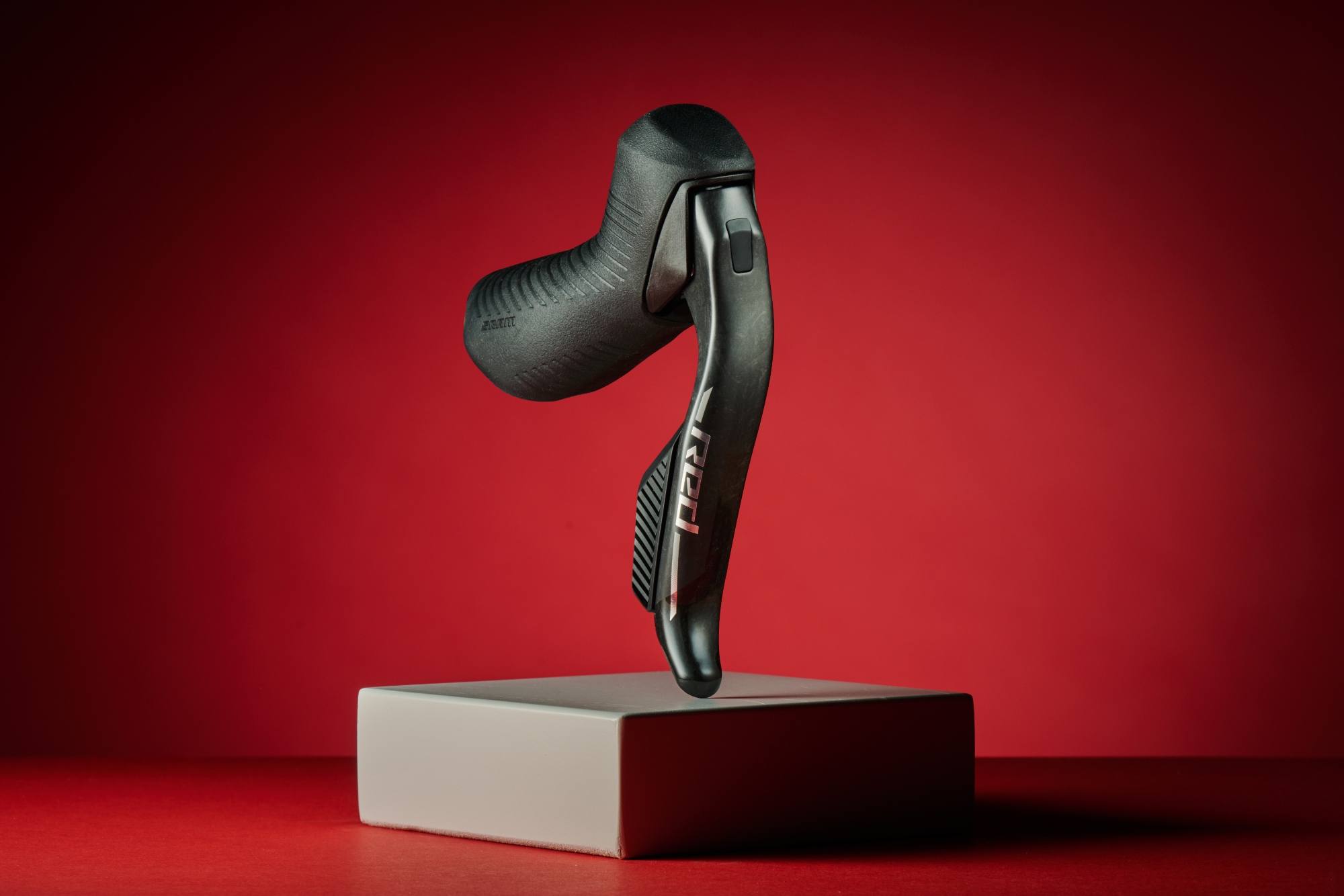
SRAM Red AXS hoods have been redesigned and are now smaller
I have been able to one finger brake in any position, whether its on the hoods, or in the drops. But that said, Shimano is no slouch in the brake department either. They feel reliable as ever, and use mineral oil instead of DOT fluid, which is advantageous for home mechanics.
But SRAM has, in my opinion, overtaken Shimano here, and by quite some margin. Modulation, lever weight, and stopping power are all up on Shimano, so SRAM takes another point.
Ergonomics
Something that Shimano has always done so incredibly well over the years is groupset ergonomics. I have always been won over by its shifter design, and that is no different for the R9200 Dura-Ace groupset. The shifter bodies are the perfect diameter to be easy to grip, while not feeling uncomfortably small, and the slightly inboard slanted hoods allow for an aggressive race position while tucked up on the hoods.
SRAM on the other hand, have always been slightly polarizing. The old SRAM levers were, well, interesting and personally something I never got along with. So, when I saw the new group for the first time I was over the moon to see that they had been completely redesigned - but have they fixed them?
When riding on the hoods, they are brilliantly comfortable. The repositioned master cylinder makes for a well-sized handhold that offers plenty of control. The brake levers are now flared slightly too, which caters well for increasingly common flared handlebars.
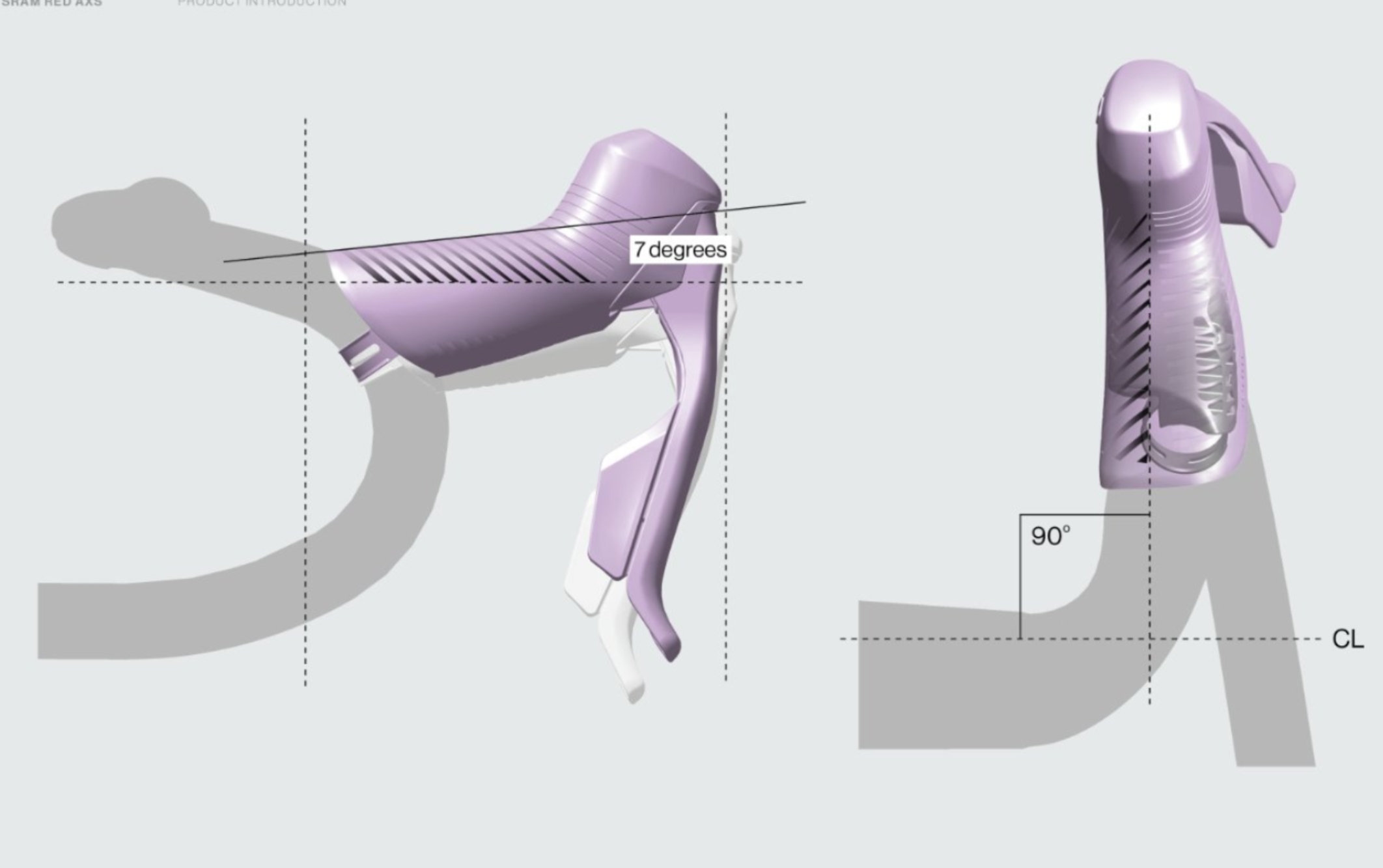
SRAM Red AXS shifters have been angled to increase comfort
In the drops, the levers feel great, and SRAM also offers around 10mm of adjustment to move the lever closer to the handlebar, something that people with smaller hands will certainly benefit from.
Button tactility is pretty similar across the board - both Shimano and SRAM have confident feeling shifts that are hard to miss, and both systems are so good at this point that choosing between the two is simply personal preference.
Where SRAM is let down slightly is riding in an aggressive position on the hoods. The shape of the front of the lever makes it hard to grasp the hoods comfortably while in a breakaway position - yes this won’t affect everybody, but this is SRAM’s top-level groupset, so it's worth bearing in mind.
In truth, it’s so close between the two brands that I have to give each one half a point here. Adjustability, button quality, and hand positions are all very similar, and while Shimano might edge SRAM for breakaway riding, in the same vein, if you are a gravel rider, SRAM might be the better option.
Aesthetics
Aesthetic preferences vary, but for me, Shimano's sleek, understated design has a real sense of timeless elegance. Conversely, SRAM Red AXS stands out with its bold styling, featuring aggressive lines and sleek shifters that add a touch of flair to any bike.
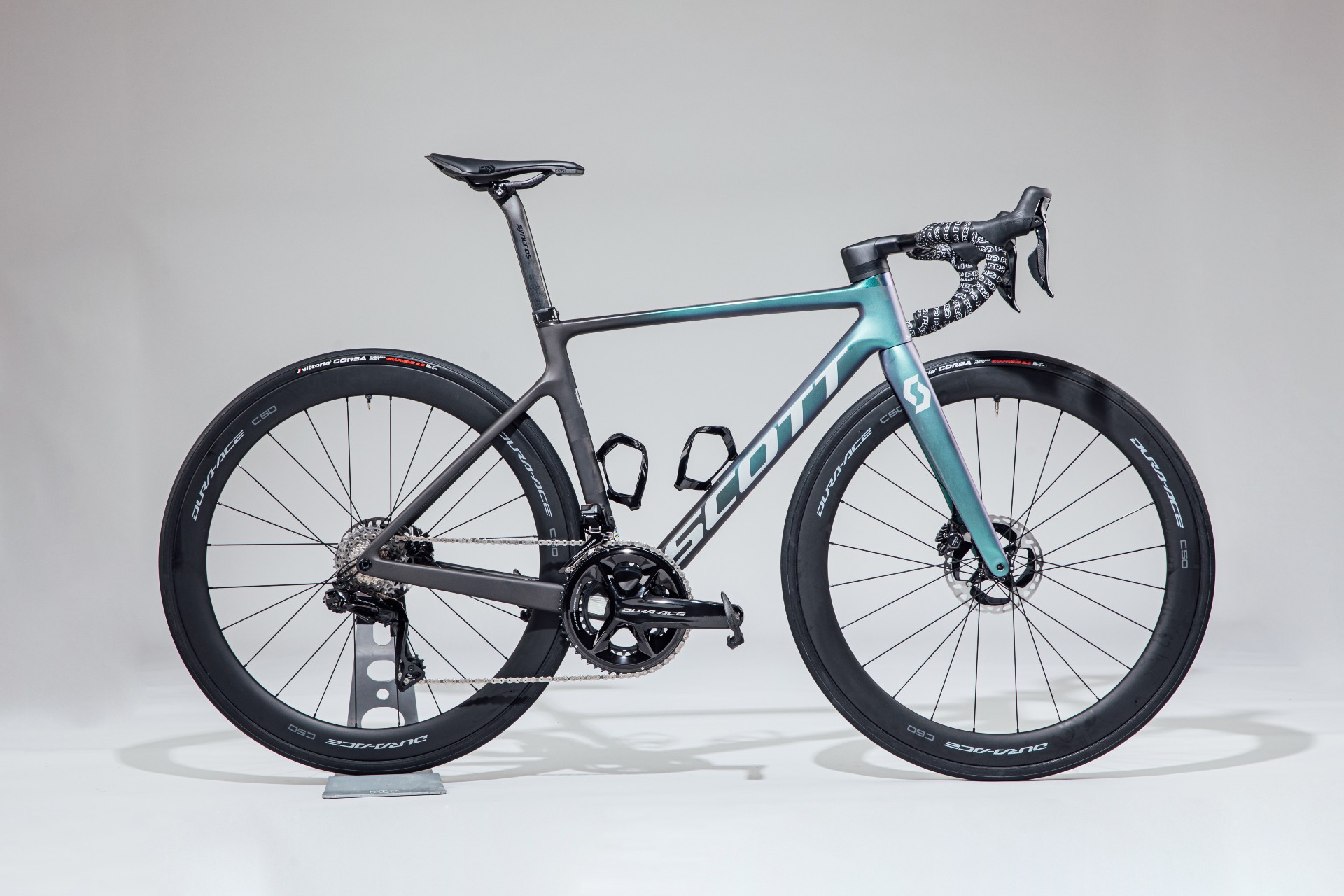
Shimano's Dura-Ace Di2 groupset has always impressed us
Don't get me wrong, they both look great, but for what its worth, on looks alone, I'd still choose Dura-Ace.
Features
When it comes to wireless shifting, SRAM has led the way from day one. As the first to go wireless, it did an impressive job of protecting the intellectual property of its designs and made it almost impossible for other brands to follow suit.
Perhaps the most useful feature of the SRAM Red groupset is the removable and interchangeable batteries. Bikes are big, invariably, get pretty dirty too - so when it comes to charging your groupset, you don’t necessarily want to be traipsing your bike through your living room to cosy it up to a plug socket.
SRAM negates this by having removable batteries that charge via a USB hub. It also means that if you run out of battery mid-ride, you can swap your one still working battery to be able to change gear on least on one of your mechs.

When it comes to wireless shifting, SRAM has led the way from day one
SRAM has also leveled with Shimano in the button department too, adding new extra 'bonus buttons' on the inside of the lever hoods. Similarly to Shimano’s auxiliary buttons on the top of the hoods, these can be programmed to change screens on Hammerhead head units, change gear, and more.
While both Shimano and SRAM feature app integration for the respective products, SRAM’s software is a little more user friendly. This, in combination with everything else means another victory for the American brand.
Power meter
Once upon a time, a power meter would have been a rare commodity in the cycling world, but with over a decade of advancing tech, power meters are pretty much the norm now when it comes to top-level bikes.
Both Shimano and SRAM have their own power meters on top-level groupsets, however the technology involved is slightly different.
SRAM’s system is a chainring-mounted unit that uses a single strain gauge to get a power output accurate to +/- 1.5%. Although mounting this at the chainring can be very accurate, it does mean that the left and right power balance has to be estimated rather than truly measured.
Shimano’s power meters, on the other hand, are crank-based. This means they have to measure units on both the left and right crank arm, meaning they can calculate a true power balance, and measure power once again to +-1.5%.
It’s pretty close between the two of them, however I must say that I have had a more reliable experience over the years with Sram, so though it’s tight - I’m giving the point to them.
Price
When it comes to price, it's fair to say that both SRAM and Shimano are both pretty darn expensive. When I tallied up the totals for the two brands I was reminded just how much a top-of-the-range actually groupset costs - but they are comparable.
For a full groupset, including rotors, chargers, batteries, and powermeters - everything, you are looking at a total of £4248 for SRAM, and £4281.87 for Shimano.
But it's worth saying that not many people actually buy a groupset on its own, and with both groupsets so close in price, bikes are likely to retail for the same cost meaning to almost every consumer, this one is a draw.
Conclusion
All in all I think the contest has become closer than ever between the two brands. I am someone who has swapped between the two groupset manufacturers over the last few years, and I really think as a new customer I would struggle to pick one over the other - however, there are some key points I would make.
Shimano on the one hand, I think is more ergonomic for race bike positioning and as such makes it my pick for the road, but when it comes to gravel, I don’t think the hoods provide as much security as SRAM. Add to that the plethora of gearing options available for one-by and two by setups, and I think which groupset I would choose would really depend on my riding style.
For more longer miles, and steeper climbs, I think SRAM is hard to pass up, but as a racer at heart, the shift speed of Shimano gives them the win - just...

Thank you for reading 20 articles this month* Join now for unlimited access
Enjoy your first month for just £1 / $1 / €1
*Read 5 free articles per month without a subscription

Join now for unlimited access
Try first month for just £1 / $1 / €1
Get The Leadout Newsletter
The latest race content, interviews, features, reviews and expert buying guides, direct to your inbox!

Joe is Cycling Weekly's tech writer. He's always had a love for bikes, since first riding a two wheeled steed before the age of four. Years down the line, Joe began racing at 16, and enjoyed great experiences internationally, racing in Italy, Spain and Belgium to name a few locations. Always interested in tech, Joe even piloted his Frankenstein hill climb bike to a Junior National Title in 2018. After taking a step back from elite level racing in April 2022, Joe joined our team as a freelancer, before becoming Tech Writer in May 2023.
-
 'This is the marriage venue, no?': how one rider ran the whole gamut of hallucinations in a single race
'This is the marriage venue, no?': how one rider ran the whole gamut of hallucinations in a single raceKabir Rachure's first RAAM was a crazy experience in more ways than one, he tells Cycling Weekly's Going Long podcast
By James Shrubsall
-
 Full Tour of Britain Women route announced, taking place from North Yorkshire to Glasgow
Full Tour of Britain Women route announced, taking place from North Yorkshire to GlasgowBritish Cycling's Women's WorldTour four-stage race will take place in northern England and Scotland
By Tom Thewlis